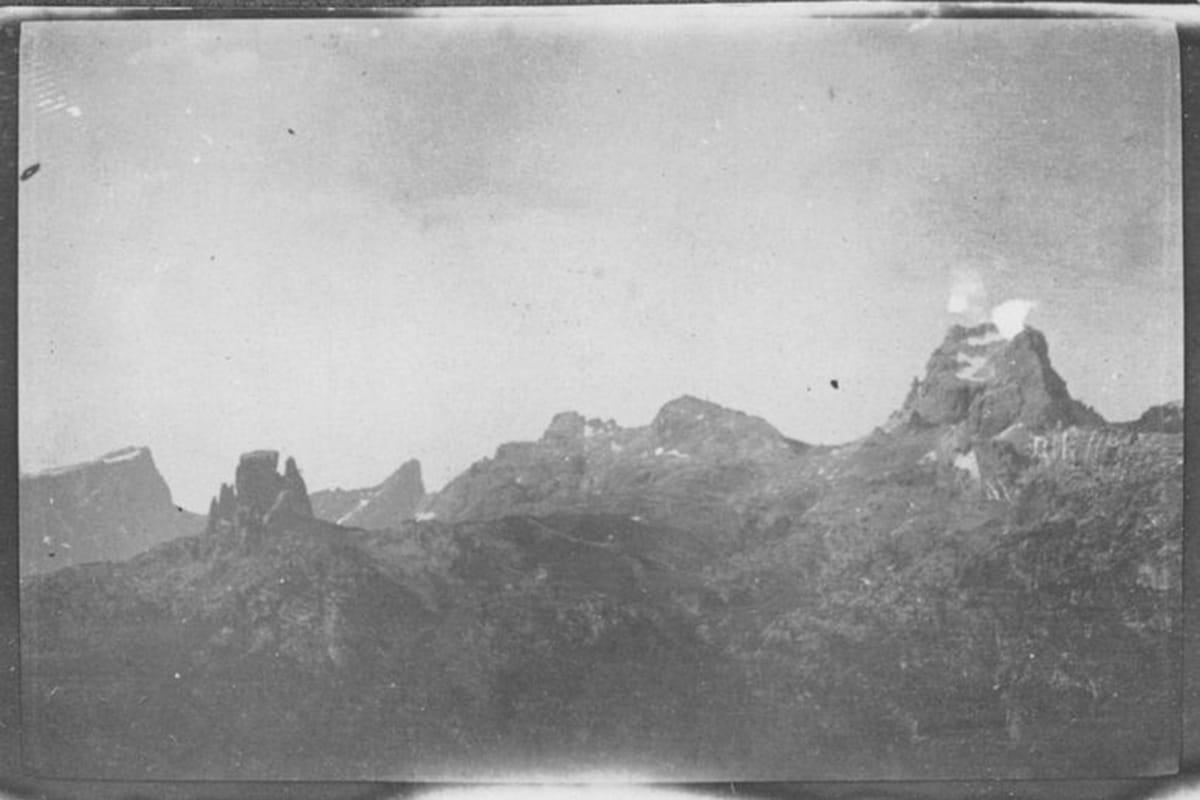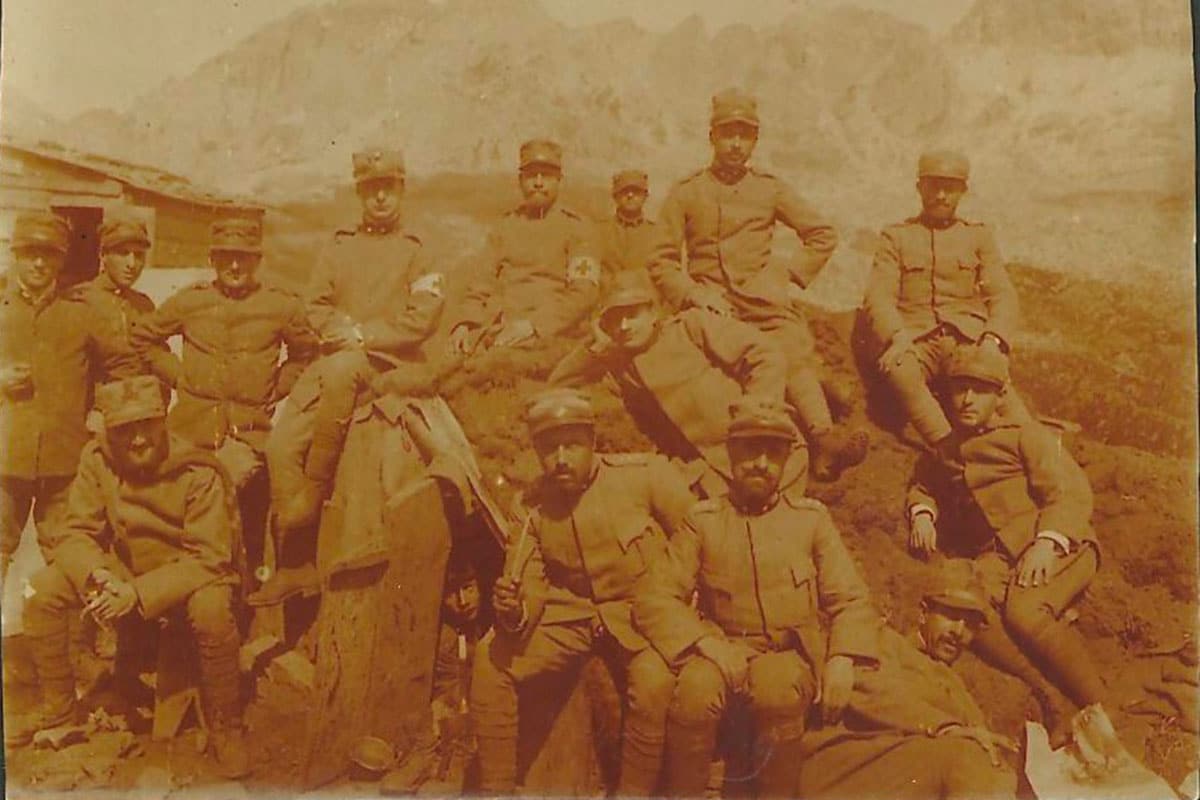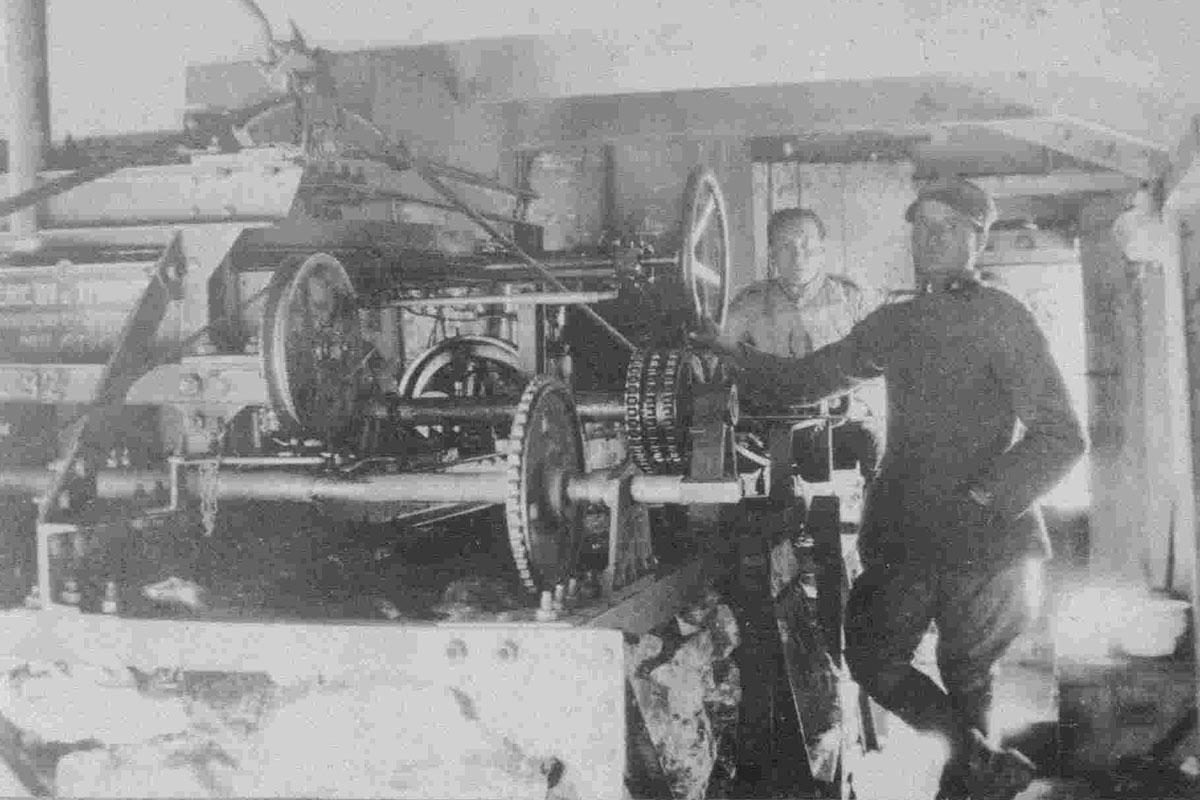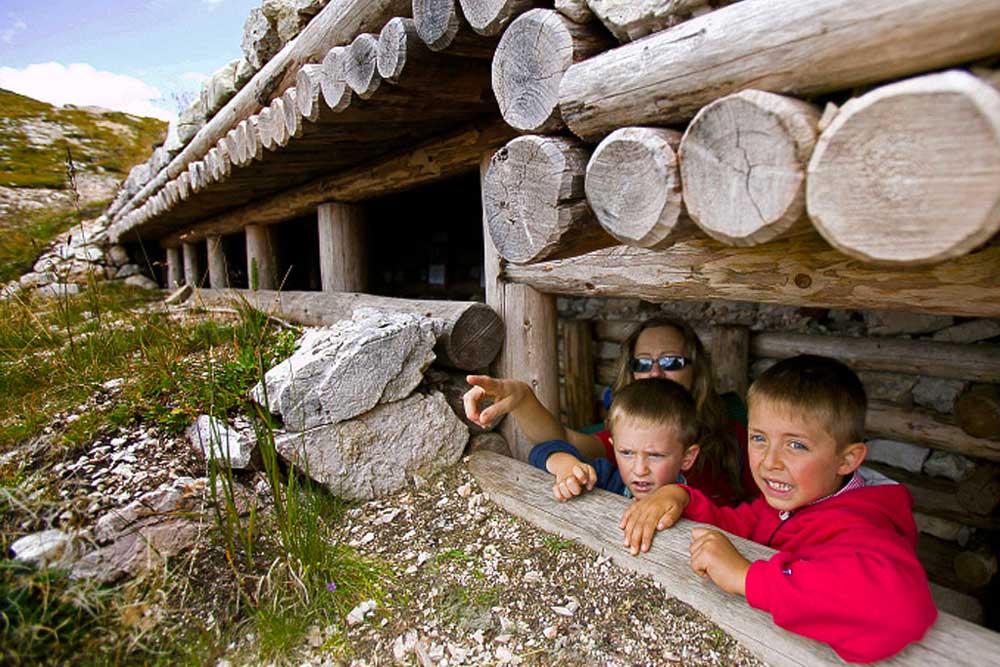Trenches, military camps and cableways
Trenches
Trenches have been one of the symbols of the Great War.
When European governments decided to go to war, everyone was convinced that it would be afast war in which time factor was essential.
After a few weeks, however, the different European fronts became stable. Hundreds of trenches began to be excavated, from northern France to Eastern Europe to Poland and the Balkans.
Theselong corridors, deep just under two meters, appeared immediately also on the Italian front, on the plain, on the Carso plateau and among the high mountain snow.
Despite the initial optimism of the Italian government, war had the same characteristics as the rest of Europe.
Ph: Collezione Francesco Quaglio
Military Camp on Nuvolau Fork
Mount Averàu is an isolated tower of 2648 m next to mount Nuvolàu 2575 m and Mount Gusella 2593 m. Between Nuvolau and Averàu there is the Nuvolau Fork at 2485 m, and that’s where Rifugio Averau is placed; Between 1915 and 17 the warline of the Royal Italian Army ran from Digonera to Monte Pore to Nuvolàu.
At the top of the Averau and the nearby “Torre Grande” (big tower) of the 5 Torri were builta venue and an observatory, those were the privileged locations to observe the enemy lines, to photograph them and to illuminate them at night during the attacks. Above the boulder to the right of the Avera for those looking from Rifugio Scoiattoli, a photoelectric station was installed on the Austrian front.
At the base of the mountain was built a cabin where on July 11, 1916 the italian king Vittorio Emanuele III spent the night awaiting the outbreak of the Castelletto mine at 3,20 pm.
At Fork Averau, the soldiers built a military camp with dormitories, kitchens, warehouses served by a cable car, a safe base for soldiers who were stationary. Another cableway departed from Rifugio Cinque Torri to reach the summit of Nuvolàu.
Ph: Collezione Paolo Giacomel
Observatory of Averau
“The Averau summit is an immense, prodigious tower with a stout nudity of pink, and viewed from below, from the foot of its peaking walls, has something supernatural and frightening. The gaze rises up to the sky along the tormented rock that overhang, and that bulk vertiginous that comes out of the logic of our conceptions arouse a vague sense of dismay. On his hips run deep crevasse, strange slot in which a dark hostile is hidden.
On the one hand the extraordinary wall is split apart, and form pointed peak, among which imply in the shadow the precipitous and fiery flow of debris of the canyons creeps.
To the east, the massive rocky, grey-white, all in layers, on which the tower is founded, goes uphill, goes on softly like a bastion, like the city wall of a fabulous fortress of which the Averau is the donjon, and forms the summit of the Nuvolau”
(L. Barzini, Al fronte)
October 1, 1915. Three infantry on the top of Mount Averau installed a wooden staircase to climb from the base to the summit and a small cabin as a telephone observatory, had to maneuver an electric spotlight and other instruments for intermittent optical signaling at distance.
More or less prolonged light flashes allowed us to communicate using the Morse alphabet. From the height of 2628 m you could give the artillery coordinates to hit the enemy targets, but above all to observe the movements of the Austro-Hungarian troops.
Ph: Collezione Carlo Balelli
The importance of the “photoelectric system” is evidenced by this rare photograph taken from Castelletto.
You can notice an explosion on the top of Mount Averau (right in the picture); which means that the Austro-Hungarian artillery tried to shoot and destroy the reflector.
Ph: Collezione Carlo Balelli
Cableways
A dark dot moves silently on the snowy side of a mountain, in the echo of the artillery bouts. Shortly after, another dot goes down fast starting with a soldier lying on the bottom of the trolley hanging on the two straight lines of the ropes.
So the military cable cars made thousands and thousands of times between 1915 and 1917: they lift up withsupplies for the first line and came down with the wounded. They were very important instruments for the mountain warfare. On the Italian front there were over 2.000 cable cars for a total development of about 2300 km. line.
The work of the Genius aerial lift was the back bone that allowed the troops to endure in extreme environments for long months, as one cableway made daily about 1200 donkeys for the transport of materials.
Ph: Esercito Italiano – Museo storico del 7° reggimento Alpini
Technical data
The cable cars consisted of a trolley running on a carrying rope, pulled by another loop-locked rope, driven by an upstream pulley.
An outburst engine turned the drive pulley and pulled the car up and down the downhill movement, tensioning the ropes was guaranteed by a set of downward counterweights.
The assembly was very fast (in the order of 72 hours) and involved a hundred Alpini(italian mountain troops) mounts the stations, then the easel supporting the ropes and finally unrolling oft he rope. Thetransport of the steel cable car required the largest number of men, who climbed in single file along the paths.
Mounting was very dangerous for the soldiers who could be exposed to shoting oft he enemy.
Cats at the front to fight mice in the trench
“On 24.10.1916 That night I was on guard at the 2nd link, when they let me know that I am called at the Regiment. I had to leave immediatly for Padova to take away cats and take them to the front.
Surprised at this original assignment, obtained the necessary documents for the trip and I left happy as a clam, only alone, armed with a simple stick. I arrived at Caprile at 10 p.m., where was the Army Command to have permission to travel on a lorry. Waiting for morning sleeping on a little hay in a hut where there were the mullets of the salmon.
On the 25th October morning, with the permission to mount on truck, I arrived at Belluno at three in the afternoon. Knowing the time oft he train, I left at midnight for Padova and arrived on the 26th morning I introduced myself where I had to take the famous cats.
Here I found some very nice people knowing that I was in Milano, they offered to justify my delay I would have done. In fact, I arrived home unexpectedly towards midnight and stopped for two days with my family, leaving for Padova in the evening of 28.10.
In Padova at 9am on 29th I presented where I was awaited.
I took 12 cats closed in 3 baskets and, accompanied by the music of the hungry beast’s music, after two days of pilgrimage on the train, lorries and mules, I arrived to the Regiment and delivered the animals luckily alive.
(The foot soldier Carlo Giussani)
Ph: Collezione Paolo Giacomel
Artillery at Prà Pontin
16th of April 1916, at sunrise, the day before the offensive in Col di Lana. Two divisions of Italian artillery, divided in 22 batteries dislocated from Mount Nuvolau to Mount Moe, began the assault.
At „Prà Pontin“, the fork that dividing the Mount Pore from Mount Averau, there were2 cannons of the 3rd Battery 210, in addition to the 1st and 3rd Batteries of the 13th Regiment of Artillery, composed of 3 “pieces” each.
Country Artillery’s cannons were named 75-911.
With fixed fire, but without continuity because they should not look like preparation shot, were bombarded the trenches ant the nettings of Cima Lana, the B and C hike route, the guns machine and the observatory.
Counterattacks were also made against the Austrian artillery of Valparola, Cherz, Pordoi and Corvara.
“The yesterday’s bombing (April 16, ndr) of the Col di Lana Peak and the upper section of the tunnel has been beyond any violent … the trenches, especially those of the right wing, are severely damaged, several shanties are upset, The crosslinking in part removed. The telephone communications are interrupted in 12 points: we have had 3 deaths and 2 serious injuries During the night we have been working to repair trenches and crosslinking, but this will take a long time.In the night, every 15 minutes A shrapnel broke out on the hike on the ridge.”
Report of the Pustertal division
Once the destructive action was completed, the two divisions of Contry Artillery, with the help of reflectors, placed all the disrupted works under their interdiction fire, to prevent the resettlement that the Austrians were attempting.
Ph: Collezione Francesco Quaglio
Corporal Barbacini and the other gunners of Pra Pontin area.
The cannons were placed in the fork that divides Mount Averau and Mount Croda Negra from Mount Pore.
Ph: Collezione Francesco Quaglio
Further resources
Events and re-enactments
Re-enactments and events not to forget that time that shocked the Dolomites in 1918 and beyond.






